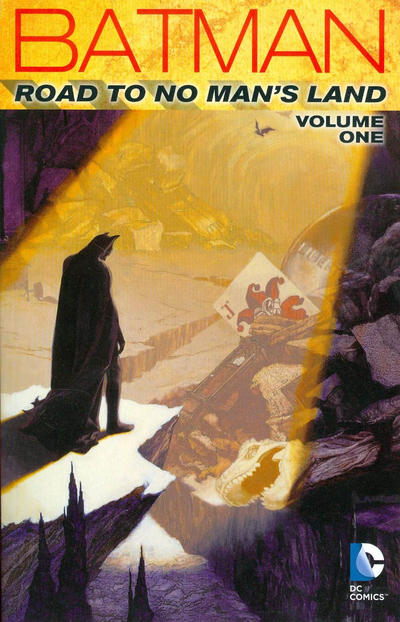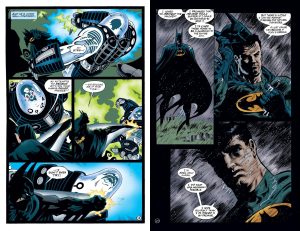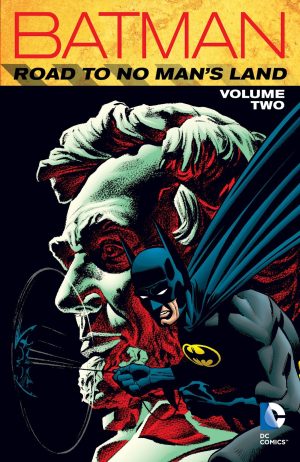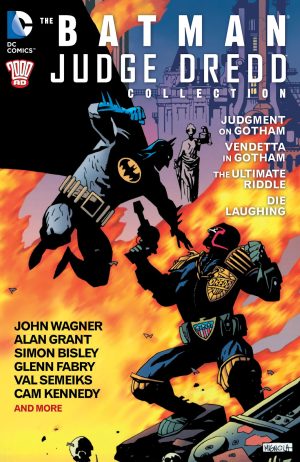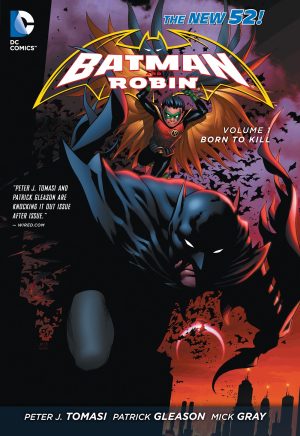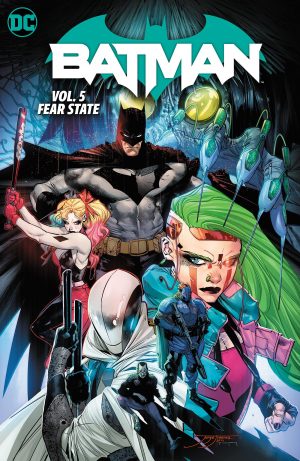Review by Frank Plowright
No Man’s Land was the last of the all-encompassing Batman crossovers of the 1990s. When DC issued a repackaged series of reprints in 2016 they bridged the gap between an earthquake devastating Gotham in Cataclsym and the main series with two volumes of Road to No Man’s Land touring around how the situation affected Gotham’s heroes.
It gets off to a great start with 26 pages of glorious Mark Buckingham art on Alan Grant’s story of Mr Freeze and Clayface taking advantage of a city in ruins (sample spread left), but the infusion of villains makes it a rarity here. More in keeping with the remainder is the following exploration of a tragedy by Grant nicely drawn by Norm Breyfogle. What follows that is Batman going around Gotham helping people who’re trapped or in need. Doug Moench and John Beatty have Batman trying to free folk from a subway car blocked by a rockfall; Chuck Dixon and Jim Aparo set Robin the task of finding a child’s lost mother; Grant and Buckingham investigate rich people trapped in a restaurant without food; Dixon and Staz Johnson have Robin visiting a militarised suburbia, and so on.
Unlike earlier Batman crossovers, almost everything here is readable at the very least, and the reason is possibly the lack of villains, placing human beings in need at the very heart of the stories. The demands of superhero comics ensure the troubles of ordinary people are only rarely the focus, and when they are it’s often to counterpoint whatever the Joker or Poison Ivy is up to, so a fair amount of such spotlights in one collection is unusual. Mad Hatter and Joker do both put in an appearance, and there are villains, some organised, but they’re mainly looters, the desperate, lost souls and the entitled wealthy. One human spotlight that stands out is film and TV writer Lisa Klink focussing on Alfred protecting Wayne Manor, including a well conceived touch of brightness in bleak times.
Buckingham is the standout artist, making far more effort with decorative page layouts while still conveying the ruins that Gotham now is. His most distinctive outing is the combination with colourist Pam Rambo to supply the world as seen by a new villain, Narcosis. Aparo is almost unrecognisable under James Hodgkins’ inks, but it’s an appealing combination, and most other artists produce decent pages.
By the final half dozen stories a common agenda is more apparent among the writers, who introduce an ongoing plot of what’s to be done to restore Gotham. Grant’s very good with a sequence about corporate attitudes, and Moench uses Vesper Fairchild’s radio broadcasts as evocative combination of update and condemnation. He’s also responsible for the collection’s single most shocking moment toward the end.
Not all massive collections are sympathetically paginated, but this is. If a story was originally serialised in two parts, they’re placed together here, which is welcome, as is No Man’s Land being human-focussed. If you’d prefer Road to No Man’s Land complete in one massive (and expensive) hardcover, it’s combined with Volume Two in an Omnibus.
